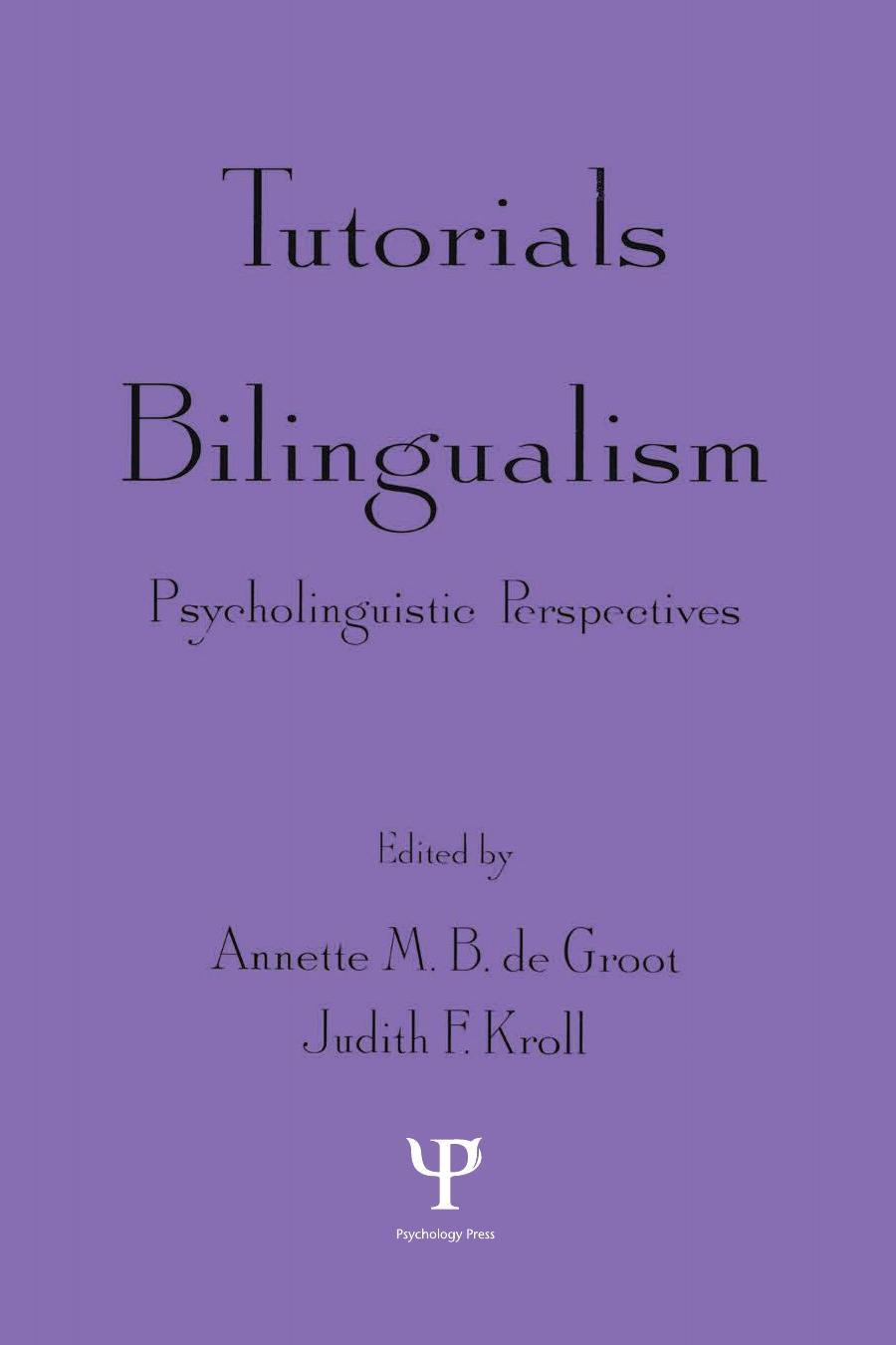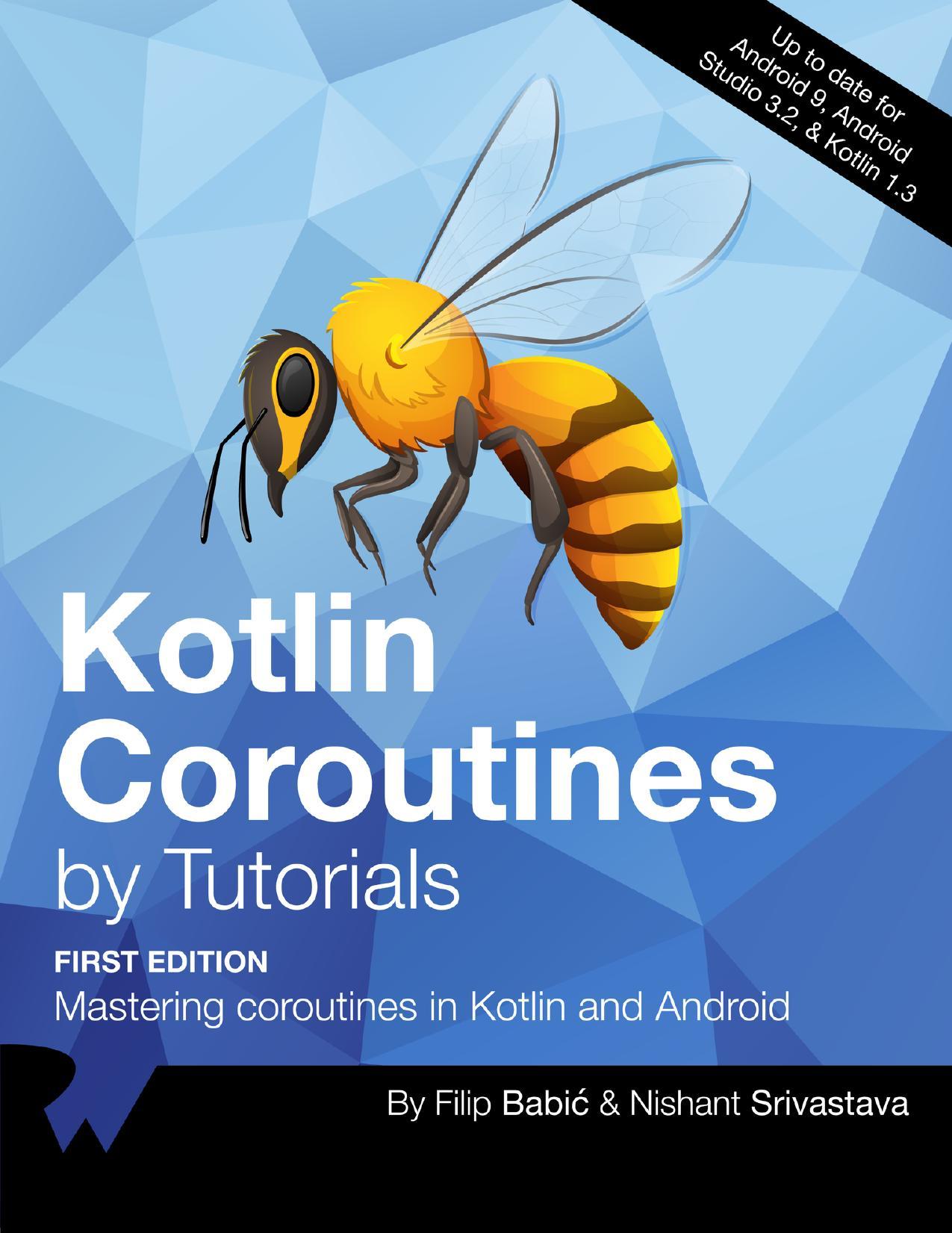download ebooks at https://ebookgrade.com
For dowload this book click link below https://ebookgrade.com/product/tutorials-in-introductory-

More products digital (pdf, epub, mobi) instant download maybe you interests ...

Tutorials in Radiotherapy Physics Advanced Topics with Problems and Solutions
https://ebookgrade.com/product/tutorials-in-radiotherapy-physicsadvanced-topics-with-problems-and-solutions/

Tutorials in Bilingualism
https://ebookgrade.com/product/tutorials-in-bilingualism/

Survey of Computational Physics Introductory Computational Science A
https://ebookgrade.com/product/survey-of-computational-physicsintroductory-computational-science-a/

Quantitative Ethnography David Williamson Shaffer
https://ebookgrade.com/product/quantitative-ethnography-davidwilliamson-shaffer/




CRC Introductory Solid State Physics with MATLAB Applications 146651230X
https://ebookgrade.com/product/crc-introductory-solid-statephysics-with-matlab-applications-146651230x/
Kotlin Coroutines by Tutorials 1942878680
https://ebookgrade.com/product/kotlin-coroutines-bytutorials-1942878680/
Push Notifications by Tutorials 1942878591
https://ebookgrade.com/product/push-notifications-bytutorials-1942878591/
Language Power Tutorials for Writers
https://ebookgrade.com/product/language-power-tutorials-forwriters/
Another random document with no related content on Scribd:
most perilous whirlpool, which requires much vigilance and labour to the navigator.
Eighteen miles beyond the preceding is the fall of Morinhos, so called from three small morros, or rocks, a short distance from the western margin, covered with sarsaparilla.
Passing an interval of twelve miles the interesting fall, denominated the Salto do Theotonio is next presented for contemplation, being an accumulation of rugged rock, twenty-six feet in height, broken into four parts, dividing the waters of the Madeira into as many channels, each having the appearance of a large river. Parallel with this majestic sluice a reef of rock extends from the eastern margin almost to the western, impelling the volume of waters of three channels into the fourth, the whole flowing with immense profundity and greater rapidity by this strait between the extremity of the reef and the river’s left bank. The canoes are dragged over land, with much difficulty and labour, nearly half a mile.
Five miles lower is the fall of St. Antonio, which the river passes by three currents, formed by two small stony islands. This is the first which interrupts the navigation of the canoes proceeding upwards, and is situated in the latitude of 8° 48′.
Three months is generally consumed by the navigators of this river in advancing up from this fall to that of Guajirumirim in the Guapore.
From the fall of St. Antonio to the embouchure of the Madeira there are more than thirty islands, from three to ten miles in length, almost all of them covered with superb timber; those of a smaller size are much more numerous, the largest is called Minas, which is ten miles long and three in width, and is sixty miles below the mouth of the river Marmellos.
The waters of Rio Negro and the Madeira increase the width of the Maranham to nearly four miles, and when there are parallel islands it is at some places eight, and at others much more.
About two hundred miles in a direct line, or three hundred by the course of the river, below the Madeira, is the mouth of the large river Tapajos; and two hundred miles further to the east that of the river Xingu, equal if not superior to the preceding; both coming from the district of Cuiaba, and neither with less than eight hundred miles of course.
At the confluence of the latter the Amazons inclines to the northeast for the distance of one hundred and forty miles, augmenting sensibly in width as it approaches the equator, where it discharges itself into the ocean by a mouth of from twenty-five to thirty miles.
Eighty miles below the mouth of the Xingu there is a channel called Tagypuru, in certain parts very narrow, and running towards the south-east as far as the mouth of the river Annapu, where it becomes upwards of fifteen miles in width, with many islands, and flows to the east until it enters the river Tucantins, which comes from the centre of the province of Goyaz, and at this part inclines to the north-east, increasing considerably in width, and entering the ocean by an embouchure equal to that of the Amazons, with this difference, that for some leagues up it is impregnated with salt water, whilst the other carries its volume of pure waters many leagues into the sea, perfectly fresh, having acquired, by its rapidity and prodigious body, a preponderating power over the first essays of its saline opponent till the ocean buries it in fathomless depths.
On the northern margin of the Amazons, below the Rio Negro, are discharged, among other smaller streams, the Matary, which flows from some handsome lakes; the Urubu, otherwise Barururu; the Aniba, denominated sometimes Saraca; the Trombetas; the Gurupatuba; and the Annarapucu.
The lateral lands of the Amazons from Borja, where the falls and currents terminate, are flat and covered with woods. The current is always rapid, even at its greatest diminution, and the waters when drawn are of an orange colour, and at the floods are never muddy. Its bed is an archipelago, leaving, in the space of above one thousand miles, few places where the navigator can distinctly see
both sides of the continent. These islands increase and decrease annually, not only in number but in size at the period of the floods, which, in parts, divide one into two, and in others accumulate many into one by filling up the channels which separated them. Here portions of land are violently torn away from the continent, there from the islands, with which either the existing ones are augmented or new ones formed. Some are of great extent, and usually covered with large trees.
The vessels which are navigated to the high Amazons are formed of trunks of trees of from forty to sixty feet in length; they are excavated into the form of canoes, with the power of fire and water, and the greatest width is given that they are susceptible of; being preserved in this state with knees, to which are nailed planks to make them higher, having around prow, and a poop with a cabin, and a rudder. They always retain the appellation of canoes, and have two masts, with round sails, in order to proceed up before an easterly wind, and descend by the impulse of the current. It is dangerous to navigate near the margins, where frequently large trees fall into the river without any wind, the current having excavated the ground upon which they stood.
The tide advances to the town of Obydos, more than five hundred miles above Macappa, computing by the bed of the river. With a strong wind it swells like the sea, but immediately the wind subsides it becomes tranquil by the power of the current, which dissipates the advancing waves in a moment.
Amongst other species of fish with which it is stored are the gorujuba, the large perahyba, doirado, pescada, and puraquez, which possesses the property of benumbing the arm of the fisherman. A species of seal, denominated by the Indians manahy, and by the Portuguese peixe-boy, (ox fish, or sea calf,) in consequence of the similarity of its snout or head to that animal, is the largest, and feeds upon herbs which grow upon the margins, without going out of the river. It is viviparous and gives milk to its young like the whale, and has extremely small eyes; the flesh is like
veal and of a good flavour, of which is also made sausages, called mixiras; the oil extracted from it not only serves for lights but for seasoning various eatables. The Dutch, when they had a footing in these parts, derived a lucrative branch of commerce from this fish. The pirarucu is large, and esteemed good; its tongue serves the Indians for a rasp to grate the guarana fruit; the internal parts, after being dried in the sun, form a good glue, and when reduced to powder exceed every thing for clarifying coffee. Alligators are numerous and very large; and the tortoise is very bulky and abundant, but its shell is of no value: it is amphibious, and deposits at one time more than a hundred eggs in holes which it makes in the sand at a short distance from the water, covering them over; the heat of the sun hatches them, and the young, disengaging themselves from the sand, immediately proceed to the river; many, however, in this short march, are devoured by the hawk.
The river Moju, which is spacious and deep, even as far as the tide reaches, originates in the territory of the Camecran Indians beyond the woods, which it afterwards traverses northward until it enters the bay of Guajara. In the forests or woods above mentioned, consisting of most excellent timber, and where the chestnut-tree of the country abounds, there is a great scarcity of game, caused, no doubt, by the continued huntings of the Ammanius, Pochetys, Appinages, and Norogages, tribes of Indians who dwell in the circumjacent country. The want of this resource is the alleged reason for establishments not having been formed in the fertile territory watered by this river, navigable to its centre.
The Camecran Indians are divided into five hordes, distinguished by as many pre-names, namely, Ma-camecran, Crore-camecran, Pore-camecran, Cha-camecran, and Pio-camecran, the whole being very similar in their language and customs. The Ma-camecrans live at present in a state of pacific intermixture with the inhabitants of the new arraial of St. Pedro d’Alcantara, belonging to the jurisdiction of Goyaz.
Forty miles above the mouth of the Moju there is a narrow, winding, and extensive strait, denominated Iguarapemirim, which is a channel of communication between this river and the Tucantins, thus forming an island of thirty-five miles from north to south, and twenty at its greatest width. The Acara, also considerable, affords navigation to the agriculturists upon its adjacent lands, divided into various parishes, and loses its name on entering the Moju by the right, fifteen miles south of the capital. Six miles below this confluence the Moju is nearly a mile in width.
The river Guama, likewise considerable, comes from the east, traversing a fertile country partially inhabited to its source, and is discharged into the bay of Guajara, near the Moju, having received, near forty miles above, the Capim on the left.
The largest island of this province is the Joannes, otherwise Marajo, situated between the Tucantins and the Amazons, with the ocean on the north, and the strait of Tagypuru on the south. It extends ninety miles from north to south, and one hundred and twenty from east to west, is inhabited and watered by various rivers; abounding in cattle, and formerly had the title of a barony.
Its principal rivers are the Anajaz, which issues from a lake, and has a course, to the west, of fifty miles in a direct line. The Arary, something larger, flows from another lake, and discharges itself by two mouths on the eastern side the Mondin, which also runs to the east, and the Atua to the south-east: the whole are navigable with the aid of the tide.
The Nhengahybas, principally masters of this island, and Christianized in part by the Jesuit Antonio Vieyra, were expert mariners, as well as others living upon the adjacent rivers, and possessed a great number of canoes, denominated in their own language igaras, from which they derived the appellation of Igaruanas; and always proceeding in canoes, were distinguished by this name from tribes who lived in woods distant from the water. Under the denomination of Igaruanas were also comprehended the Tupinambas, the Mammayamas, the Guayanas, the Juruanas, the
Pacayas, and others. They had small igaras for fishing and proceeding from one neighbouring place to another; but their war igaras were forty and fifty feet long, of one trunk, excavated with stone axes and fire, and were called maracatims, from maraca, the name of a certain instrument made of a gourd, with stones or dried legumes within; and tim, which properly signifies the nose, but translated to imply the beak of a bird, and even the prow of the vessel, in consequence of these canoes having at the head a large vara, or pole, in the form of a bowsprit, to which the maracas were suspended with small cords, clashing together with a loud rattling noise equally warlike and terrific. Their battles were fatal, and decided with the arrow, spear, and club.
The Igaruanas of the lower Amazons were esteemed the very best of rowers, when they were habituated to it from their infancy. It was they who, by the force of the oar, conducted the fleet of Captain Pedro Teyxeira from the bay of Guajara to the sight of the Andes.
With four very large rivers, the Tucantins, the Zingu, the Tapajos, and the Madeira, nature has partitioned this province into as many districts, which it is probable in a short period will form an equal number of comarcas; and, for the disembarrassment of their history and geography, we will describe them as so divided, namely:
DISTRICTS PRINCIPAL TOWNS
Para Proper Belem or Para. Braganca. Collares.
Xingutania Villa Vicoza. Gurupa. Melgaco.
Tapagonia Santarem. Souzel. Alter do Chao.
Mundrucania Villanova da Rainha. Borba. Villafranca.
DistrictofPARA.
The district or comarca of Para is confined on the north by the ocean, on the south by the province of Goyaz, on the east by that of Maranham, and on the west by the district of Xingutania, from which it is separated by the river Tucantins. It is four hundred and fifty miles from north to south, and two hundred from east to west, the country being flat, watered with many rivers, and possessing immense woods, demonstrating the fertility of the soil.
The before-described rivers Guama, Acara, and Maju, are the principal ones of this district, well enough provided with ports, and exceeding the others in population and agriculture. The southern part is yet occupied by wild Indians. The tribe Taramambazes, who were masters of the sea coast from the bay of Turyassu to that of Cahete, excelled all others in the art of swimming. They could swim leagues, and frequently proceeded by night to cut the cables of ships anchored at a distance, remaining an extraordinary time under water.
BELEM, more generally called PARA, is the capital of the province, situated upon the eastern margin of the river Tucantins in the bay of Guajara, at the northern angle of the embouchure of the Guama, fronting the island of Oncas, and in a plain eighty miles from the ocean. It is an episcopal city, in a state of mediocrity, with a population now only of about twenty thousand, many having been recently swept off by the small-pox. If the access to it was better it would become more rapidly commercial. It is ornamented with many chapels, a convent of Capuchins, another of slippered Carmelites, a misericordia, and a hospital. The cathedral and the palace of the governors are handsome edifices. The streets are straight, the principal ones paved, and the houses mainly of stone. The convent of Mercenarios, who are extinct, is at present the quarters of a regiment. The ci-devant Jesuitical college is converted into a seminary, and the episcopal palace and the church serve for the misericordia. It has a tribunal da Fazenda-real, similar to the other capitals of provinces, a port admiral, an ouvidor, a Juiz do Fora, and royal professors of Latin, rhetoric, and philosophy. Since the arrival of the Royal Family in the Brazil, botanical gardens have been
established in the vicinity of the few maritime towns of note; and this city can boast of one, having a variety of the most useful and best trees of the province, likewise some European trees. There is an arsenal with its chapel, and many engenhos for rice.
At the request of John V. Pope Clement XI. despatched a Bull for the creation of this bishopric in 1719, and none of the Brazilian cathedrals originated with so much splendour, and attendants of archdeacons, canons, deacons, &c. &c. It is divided into two parishes, St. Maria da Graca, and St. Anna, amongst whose inhabitants there are comparatively few negroes.
The port in which the tide rises eleven feet is considered to be diminishing in depth. Thunder is very frequent, but not diurnal, as has been stated; the showers which accompany it mitigate, in some degree, the ardent heat which universally prevails. The land breezes, as well as those from the sea, generally every evening moderate the burning rays of the sun, which may be said to be almost vertical, and refresh the atmosphere; thereby rendering this place very healthy, and tolerably free from the endemical diseases which many regions are subject to in a similar latitude. There are few insects that introduce themselves into the human frame, or that are so troublesome as in some of the other provinces. The days and nights are equal nearly the whole year. The environs of this city were formerly very unwholesome, but an evident improvement took place after the colonists began to clear away the woods, and cattle to increase.
The exportations from hence are cocoa, coffee, rice, cotton, sarsaparilla, the Maranham and Molluca clove, raw and tanned hides, pechurim or pucheri, cupahyba or capivi, tapioca, gum, the urucu die, molasses, Indian rubber, castanhas, or chestnuts of Maranham, timber, &c. These articles were formerly sent to Maranham, and the trade with this place was carried on through the medium of coasting vessels; but the honourable ambition and activity of the English merchant, which lead him to every corner of the globe for the purposes of commerce, did not allow this place
long to escape his observation, and one or two establishments were formed here soon after the arrival of the Royal Family, which have increased to five or six. The Confiance British sloop of war first navigated up to the town, demonstrating that vessels, not drawing more water, might accomplish the same object; and a house at Glasgow subsequently employed two vessels of much larger burthen in the trade of this city, for whose present commerce, however, vessels of a smaller class are better adapted. The spontaneous productions, abundant fertility, and extent of the province, fully justify the expectation of its becoming a very considerable place; and more particularly so from the probability of its being, at no distant period, the only mart for the increasing productions of the provinces of Goyaz and Matto-grosso.
Its cottons have some time held a rank in the British market and obtained a price not far short of the Bahia cottons; the communication is principally with Liverpool, and from ten to fifteen small brigs proceed from thence to Para annually with English manufactures, and return with produce. One or two vessels also from London have recently maintained with it a regular intercourse.
The great extent of country comprising the province of Para, as well as the tributary provinces of Solimoes and Guianna, coming mainly under the jurisdiction of its governors, have induced the government generally to appoint individuals of distinguished families and noble birth to this situation. The present governor of this very important district, extending almost to the Oronocos, is the Conde de Villa Flora. Two miles to the north-east is situated a chapel of Our Lady of Nazareth, frequently visited by the inhabitants of this city.
Para was the first town in the Brazil that adopted the new constitution of Portugal, which event, highly to its honour, was brought about without any bloodshed, in the beginning of January, 1821.
Braganca, formerly Cayte, and the capital of a small capitania so called, is one of the best and most ancient towns of the province, and is ornamented with some hermitages. It is well situated on the
left margin of the river from which it derived its primitive name, and is about twenty miles from the ocean, and near one hundred to the east-north-east of the capital, and seventy to the east-south-east of Point Tigioca. An extensive bridge traverses a swamp, or marsh, and divides it into two parts; the northern division was at first only inhabited by Indians. It is a port or calling place for the coastingvessels that navigate from Maranham to Para. Its church is dedicated to St. Joam Baptista.
Twenty-five miles to the east-south-east of Braganca, and the same distance from the sea, is the parish of St. Joze de Cerzedello, upon the right margin of a small river. Thirty miles to the southsouth-west of Braganca, and eighty to the east of the capital, is the small town of Ourem, upon the right bank of the Guama. It is ornamented with a church dedicated to the Espirito Santo, and its inhabitants cultivate the necessaries of life.
Vigia, an ancient town, and for some time considerable and flourishing whilst the depository of a great quantity of cocoa and coffee, brought thither from the adjacent country, is fifty miles north-north-east of the capital, upon the margin of the Para or Tucantins. The Jesuits had a college here, and the Mercenaries an entertaining-house. Its primitive and proper name is St. Jorge dos Alamos. The church is dedicated to Our Lady of Nazareth, and the inhabitants are agriculturists and fishermen.
Cintra is a small town, fifty miles west-north-west of Braganca, seventy north-east of Para, and fifteen east of Villa Nova, pleasantly situated at the mouth of the river Maracana, of which it formerly had the name. Its surrounding country is appropriated to various branches of agriculture; the church is dedicated to the Archangel St. Miguel, and its inhabitants, who are diminishing, cultivate little more than the necessaries of life.
In the vicinity, and north-east of Cintra, is the aldeia of Salinas, with some regularity, and in a very agreeable district, having a place of worship dedicated to Nossa Senhora do Socorro.
Collares, formerly a middling town, and well supplied, is forty miles north-north-east of the capital, upon an island six miles in length from north to south, with proportionable width, and separated from the continent by a narrow strait. It has only one church of the Lady of Rozario, and its environs are partially appropriated to the production of coffee, cocoa, and the necessaries of life common to the country.
Twelve miles south-south-east of Point Tigioca, and sixty northeast of the capital, is Villa Nova d’el Rey, upon the margin, and a very little above the embouchure of the Curuca, at the bottom of a bay. Its inhabitants, for the main part Indians, are fishermen, and cultivators of mandioca, Indian corn, rice, cocoa, and coffee, which do not remove them from a state of poverty, although the soil is of great fertility, and worthy of a more active and industrious population. It has a church of Our Lady of Rozario.
Gurupy, advantageously situated upon the banks of the bay of the same name, was created a town in 1671, and became for some time rather flourishing, whilst the capital of a small Capitania, and visited by the coasting-vessels from Maranham to Para. Its anchorage-place has diminished in depth, and agriculture is declining from the want of whites as well as Africans.
Bayao, a small Indian town, with some whites on the eastern margin of the Tucantins, and thirty-five miles above Cameta, is well supplied with fish, and the rendezvous of canoes from Goyaz. It has a church of St. Antonio, and the inhabitants cultivate cocoa, coffee, cotton, rice, mandioca, divers fruits, and hortulans. Its very advantageous situation, and the wide field for agricultural improvement, promise it a considerable augmentation.
Thirty-five miles further, upon the same margin of the Tucantins, and eighteen below the fort of Alcobaca, is the aldeia of Pederneira, inhabited by christianized Indians, who cultivate the same articles as the preceding town. Here the river begins to be thickly strewed with islands to the capital. In this district there is yet the small town of Conde upon the margin of the Tucantins, twenty miles to the south-
west of Para; also Beja, a place of the same order, and seven miles south of Conde; and Abayte, an insignificant place, eight miles south of Beja; all three are upon an island formed by the rivers Tucantins, Muju, and Igarape Mirim, whose territory is appropriated to several branches of agriculture.
Arcos, situated upon the great bay of Turyvassu, is an aboriginal town, and the insufficiency of its inhabitants retards the progress of agriculture, to which its fertile soil is so favourable. Upon this coast, also, are the parishes of St. Joze de Piria, and Vizeu, inhabited by Indians; and in the adjacent lands of the river Guamma are those of Caraparu, Bujaru, Anhangapy, Irituya, St. Miguel da Cachoeira, and St. Domingos, in the angle of the mouth of the river Capim.
DistrictofXINGUTANIA.
This district is of a quadrangular form, and is bounded on the north by the river Amazons, on the west by the river Xingu, which affords it the name, and separates it from Tapajonia; on the south by the district of Tapiraquia, and on the east by the Tucantins. It is a portion of the province yet little known, and almost wholly inhabited by the posterity of the Aborigines, divided into various nations. The most northern tribes have some intercourse with the Christians of the povaoçoes, situated upon the margins of the rivers which limit the district, and various individuals of them have embraced Christianity. The lands which have been cultivated are fertile, and appropriated to a great variety of hortulans, edible roots, Indian corn, rice, feijao, tobacco, cotton, the sugar cane, and all the fruit trees of the climate.
The cocoa shrub, or tree, grows spontaneously in various situations. In the vicinities of the rivers the aspect of the woods is rendered agreeable by the diversity and thickness of the trees. They are stored with birds and game, which are alike the resource of the indolent savages and the Christians, who hitherto have not introduced the breed of cattle.
Little is yet known relative to the mineralogy of this province, nor of the genius or customs of the central and southern hordes of the natives. A great number of rivers, many of crystaline waters, flow from the centre of this comarca into those which mainly surround it.
The Annapu traverses the country from south to north, and discharges itself in front of the island of Marajo by various mouths; the principal one is spacious, and forms a great bay within. After many days’ voyage up this river, falls are met with, and its bed is strewed with large stones. In the woods which border it there are abundance of clove-trees of the country.
The Pacajaz, properly Pacaya, has an extensive course through a stony bed, and over many considerable falls, at certain distances. Four days’ voyage is required to arrive at the bar of the great river Iriuanna, which unites it on the eastern bank, and a few leagues above the embouchure is the entrance of the channel, which connects it with the Annapu. It runs east of the Annapu, and takes the name of a nation which occupies its adjacent territory, where there is great abundance of clove-trees.
The river Jacundaz, or Hyacunda, is very large, affording an extensive navigation, and discharges itself east of the Pacaya. The Araticu empties itself east of the Hyacunda by a wide channel, which bathes the island of Marago, on the south.
The Areas, which runs into the Amazons, near the northern entrance of the Tagypuru Strait, is navigable for a considerable distance, traversing woods, growing upon extensive plains, and abounding with a variety of game.
The Tacanhunas, so denominated from the tribe of Indians whose territory it irrigates, enters the Tucantins, near the Itaboca.
Villa Vicoza, originally called Cameta, and one of the most ancient towns of the province, is flourishing, and well situated upon the left margin of the Tucantins, ninety miles south-west of the capital, and is a port for the canoes navigating towards Goyaz and the High Maranham, as well as a depository for various productions
cultivated within its fertile district. It has a church dedicated to St. Joam Baptista, and was for some time the capital of a small capitania known by the same name. The Tucantins is here ten miles in width, being an archipelago. Fifteen miles to the north-east, which is the direction it takes from this town to the ocean, is the island of Ararahy, or Aragacy, ten miles in length, narrow and flat, dividing the river into two currents, the eastern one improperly called the bay of Marapata, and the western the bay of Limoeira.
A short distance from the southern point of the island of Ararahy, on the eastern bank of the Tucantins, is the southern entrance of the before-mentioned Igarape Mirim, (Narrow Strait,) and in front of it, on the opposite margin, another, called the Furo do Japim, which is extensive, and flows into the large channel that waters the southern coast of Marajo.
Eighty miles, by water, above Villavicoza, upon the same margin of the Tucantins, is the fort of Alcobaca, for the purpose of registering the canoes from Goyaz; and three miles further there is another, denominated Arroyos, for the same object: here the tide is occasionally perceptible.
Gurupu is a small town, with a church of St. Antonio upon the banks of the Amazons, twenty-five miles below the mouth of the Zingu. Some earthen ware is here made, and tiles and bricks are exported to different parts, constituting a branch of its commerce, besides cocoa and cloves. From hence is distinguished, far to the north, the serra of Velha, almost always enveloped in mist, and beyond it the serra of Paru, upon whose summits the electric fluid finds a vehicle in airy vapour, giving them additional grandeur by the vibrating thunder-peels that strike upon the distant ear. They are both of considerable altitude, and the only mountains which the navigator sees from Para to the city of Borja.
Melgaco, a town in a state of mediocrity, abounding with fish, is situated upon the western side of lake Annapu, and watered by the river of that name, fifteen miles above its embouchure. Its church is dedicated to St. Michael, and the inhabitants cultivate vegetables,
grain, &c. peculiar to the country, and extract many articles of commerce from the woods.
Portel, a small town, is situated on the eastern side of the lake Annapu, near the embouchure of the channel that connects it with the river Pacaya, seven miles south of Melgaco. It has a church of St. Miguel, and the inhabitants, almost all Indians, are fishermen, hunters, and agriculturists.
Oeyras is a small town, in a sandy situation, upon the margin and five miles above the mouth of the Araticu, forty miles north east of Villavicoza and thirty-five east of Melgaco. It has a church of Assumpçao, and its people are composed of Indians of various nations, who cultivate the most common necessaries, and indulge in their favourite habits of hunting and fishing.
Between the last river and the Panauha originated the Aldeia dos Bocas, so denominated from the Combocas, who were its first inhabitants, and from whom also the Bahia dos Bocas derived its name, being a large bay, extending westward to the bar of the Panauha, that disembogues near the southern entrance of the Tagypuru Strait.
Porto de Moz is a middling and well supplied town, upon the eastern margin of the Xingu, (which is here very wide,) twelve miles from the Amazons and the port of canoes that navigate these rivers. It has a church dedicated to St. Braz, and the inhabitants are Indian farmers, and collect some exports.
Veyros is a small town, well situated upon the Xingu, fifty miles from Porto de Moz, near the mouth of a small current, having a church of St. John Baptista, and Indian inhabitants of various nations, who produce a sufficiency of common necessaries, and some articles of trade.
Pombal is another Indian town, and of the same class as the preceding, but only requiring the addition of a certain number of whites and negroes to render it considerable and flourishing, in consequence of the uncommon fertility of its soil, and the valuable
productions with which nature has enriched it, having, besides, great facility of exportation. It is eighteen miles above Veyros, upon the Xingu, which supplies it abundantly with fish.
The island of Marajo, in consequence of its proximity, may be considered as forming a part of this district. Its principal povoaçoes are the following:
Monforte, ci-devant Villa de Joannes, a middling town, and well situated upon the bay of Marajo, has a church of Nossa Senhora do Rozario, and is nearly fifty miles north of Para. A Juiz de Fora presides over the senate, and it may be regarded as the capital of the island.
Moncaraz, originally Cayha, is a small town, with a church of St. Francisco d’Assiz, and ten miles south of Monforte, at the embouchure of a small river in front of Collares.
Salvaterra is an insignificant place, but well situated upon the southern angle of the month of the Mondin, eight miles north of Monforte, and has a church of the Lady of Conceiçao.
Soyre, a villota, or small village, is situated upon the northern batik of the Mondin, a few miles above Salvaterra, with a church of Menino Deus.
Chaves is a small town upon the northern coast, fronting Robordello, and flourished whilst a fishery existed, which was there established by a company from Para.
To the west of Chaves is the parish of Condexa, also a maritime povoaçao, refreshed with fine breezes, but possessing nothing remarkable.
In this island are also the parishes of Porto Salvo, at the mouth of the river Marajo Assu, in front of the town of Conde, Ponte de Pedra, more to the north, and Villar, a little further in the same direction. They are inhabited by Indians, who cultivate the provisions of the climate, and practise hunting and fishing.
DistrictofTAPAJONIA.
This district is confined on the north by the Amazons; on the south by the district of Arinos; on the west by that of Mundrucania, from which it is separated by the Tapajos, the river that affords the district its name; and on the east by Xingutania. It is three hundred and fifty miles in length from north to south, and about two hundred of medium width.
The Xingu being the only one of the larger class of rivers in the Brazil that has not been navigated to its heads, no authentic account is furnished of the aspect of the eastern part of this district from a certain situation upwards.
The navigators of the Tapagos have observed numerous small hills and some mountains at a considerable distance from the Amazons, in whose vicinity the lands are flat, and no considerable river flows from this district into the first, which is itself wide, and full of islands of various sizes, overspread with woods.
The river Zingu, forming the eastern limit of this district, is very wide, and is only found, after eight days’ voyage, to have any falls, demonstrating the gradual elevation of the country towards the interior. The first considerable confluent joining it on the Western side is the Guiriri, which rises in the centre of the district of Arinos: a good distance below this confluence it describes two large and opposite semicircular windings, flowing amongst small eminences.
No large river runs from this district to the Amazons, excepting the Curua, which has an extensive course, and passes the considerable lake of the same name, where it is augmented by the waters of several streams that are there discharged. Its mouth is thirty miles below the Tapajos, and canoes advance up as far as the said lake, whose margins abound in different sorts of birds, that subsist on shell fish. The Uruara, after a short course, is discharged by two mouths below the Curua.
The Guajara, also of short extent, traverses a very flat territory, where it is divided into various channels, emptying itself by six mouths, generally small, below the Uruara.
The Uraucu, otherwise Hyuraucu, having a communication with the Guajara, enters the Amazons above the Zingu, with which it also communicates in three places.
It is not ascertained yet whether there are mines of any ores in the southern part of this district.
Various aboriginal nations, it is much to be regretted, hitherto occupy this fine district, even to the immediate vicinity of the Portuguese establishments, which do not extend beyond the margins of the rivers that limit it, and whose adjacent territories are thickly covered with majestic woods of trees, whose stems are of immense span and height, the soil being of admirable substance and fertility, and well suited to every branch of agriculture. Nature here produces spontaneously the clove, cupahyba, (or capivi,) pechurim, and cocoa trees, with sarsaparilla, ipecacuanha, jalap, and other medicinal drugs. Amongst other nations who possessed the adjacent lands of the Tapajos, and were dispersed by the Mundrucus, were the Hyauains, of whom nothing is known at the present day.
Souzel is a middling town, situated in the skirts of a mount, bordering the Zingu, which is the best supplier of water to its inhabitants, mostly Indians, who are occupied in hunting, fishing, and the cultivation of different articles. It is one hundred and ten miles distant from the Amazons, has an earthenware manufactory, and may become more considerable with the increase of whites, and when the navigation of the river is extended to the districts of Sappiraquia and Arinos.
Santarem, a large and flourishing town, situated within the embouchure of the river Tapajos, is the port or calling-place of canoes that navigate towards Matto-Grosso and the high Amazons, and also the depository of a great quantity of cocoa, whose trees have been carefully cultivated in the surrounding-country, the soil being well adapted for them.
Its beginning was an aldeia with the name of the river, and founded by the Jesuits for the habitation of an Indian horde. It has a
church of Nossa Senhora da Conceiçao, and many houses of one story. The fort, which first defended it against the Indians, is now occupied by a detachment for registering the canoes that ascend and descend both rivers. The inhabitants, principally whites, do not yet breed many cattle.
Alter do Cham, originally Hybirarybe, is yet a small town, but advantageously situated upon a lake, near the Tapajos, (with which it communicates,) almost in the skirts of a rock, rising pyramidically to a considerable height, and ten miles south of Santaram. Its inhabitants are principally Indians, and, besides the usual necessaries, cultivate some excellent cocoa; but hunting and fishing are their favourite pursuits.
Aveyro, situated upon the margin of the Tapajos, has the title of a town, but is only an inferior village, its houses being thatched with straw, and disposed without regularity, in a beautiful situation. The inhabitants are Indians, and incapable of improving it; consequently the advantages of being upon a navigable river, and in the midst of a rich and fertile soil, will not be available until it obtains a supply of white people. It is about sixty miles distant from Alter do Cham.
DistrictofMUNDRUCANIA.
This district, limited on the south by that of Juruenna, has on the north the river Amazons, on the west the river Madeira, and on the east the river Tapajos. Its length from north to south, on the eastern side, is near three hundred miles, and its medium width two hundred. Along the banks of the rivers which limit it, the country is mainly swampy, with extensive morasses, inhabited by a profusion of birds, drawn thither by the shell fish. The intervals and the interior are covered with widely-extending woods, possessing trees of every magnitude. The banks of the rivers and lakes afford a species of cane, upon which the ox-fish and tortoise feed. In some parts the granite-stone is common; but there are no accounts of ore having been discovered any where in this district.
Amongst other small rivers which run into the Madeira, are the Anhangating, the mouth of which is in 5° 30′; the Mataura, which empties itself twenty miles lower down, and communicates with the Canoma in the interior of the district; and the Marmellos, originally Araxia, whose mouth is seven miles above the entrance to the lake Marucutuba.
The interior of the district is watered by the rivers Canoma, Abacachy, Apiuquiribo, Mauhe-Guassu, Mauhe-Mirim, Massary, Andira, Tuppynambarana, all of which run into a branch of the Madeira, which, under the name of Canoma, frequently denominated the Furo, or fury of the Tuppynambaranas, describes many windings, traversing some lakes until it enters the Amazons by a spacious embouchure, called the river Mauhes, which is one hundred and fifty miles below the principal mouth of the Madeira.
The Mauhes, so called from the Mauhe nation inhabiting its banks, has acquired also the appellation of the river of the Nambaranas, derived from a village or aldeia of the Tuppynambas, which existed near the eastern margins of the lake Uaycurapa, and thirty miles above its mouth.
In the space of forty miles from the Furo dos Tuppynambaranas to the town of Borbai there are the following lakes: Annamaha, Guarybas, Cauhintu, Taboca, Frechal, Macacos, and Jatuaranna, all in the proximity of the river, into which their superfluous waters are discharged. Forty miles above the said town is the entrance to the lake Mattary, and beyond it that of the lake Murucutuba.
Between the Furo dos Tuppynambaranas and the mouth of the Madeira, is the outlet of the lake Massurany. The domestic animals of this district are at present very inconsiderable; but the wild ones peculiar to the other comarcas are met with in much greater numbers, in consequence of the gun not having been yet so much introduced. With the exception of some portions of territory upon the banks of the rivers which encompass this district, the whole is in the power of various savage tribes, of whom, we are best acquainted with the Jummas, the Mauhes, the Pammas, the
Parintintins, the Muras, the Andiras, the Araras, and the Mundrucus, from which latter the district borrows its name. Each has its peculiar idiom, and the whole are divided into hordes; of which some wander about the woods and forests without any fixed residence: others are established in aldeias, where they intermix with the Christians, and have learned to cultivate various necessaries of life. So far are some of them influenced by the power of example, that they begin to cover, in part, their naked bodies; and many demonstrate their knowledge of the advantage of friendship with the Christians, by subduing their native ferocity into a tractable observance of the rules of the white settlers.
The bow is the weapon common to the male sex, of whatever age they may be: many possess another still more fatal, denominated esgaravatana; it is a reed of chosen wood, with ten to twelve palms of length, formed of two pieces glued together with wax, and firmly bound with thongs made of the bark of plants, whose perfect and equally round orifice has eight lines of diameter, and serves for the envenomed arrows, which are discharged by a puff of the breath. These arrows are not more than a span, and have at the posterior extremity a ball of cotton, equal to the eighth part of the esgaravatana. When they wish to discharge it, (which is said to be very certain, and as swift as the shot of a carbine,) the point is dipped in a thick fluid, composed of the juices of various poisonous plants. Some say that sugar is the only antidote, others that salt will destroy its fatal effects, and that the wound is not mortal if the poison was dry on contaminating the blood; and it is on this account that they carry the venom in a cocoa-nut shell, or gourd, in order to introduce the arrow into it at the moment of discharge. Condamine says, that on wounding a fowl with an arrow that had been envenomed twelve months previously with a composition made by the Ticunas of Peru, it only lived about eight minutes; but there was probably some ingredient in this poison that the Indians we have been speaking of are unacquainted with.
The Jummas also wield a club, barbed at the extremity.
The Araras, who are the most celebrated for making ornaments of feathers, form a black circle round the mouth, and perforate the cartilage of the nose, through which they put a small piece of wood, trimmed with plumes of various colours.
The Parintintins distend the ears very much with round targets, and blacken the upper lip into a half moon form, conceiving that their consequence is thus augmented.
The Muras, perhaps the most numerous among those who have had intercourse with the Portuguese, are the most backward in adopting any species of covering for their bodies, the main portion of both sexes yet appearing in a state of absolute nudity. The men not only ornament their arms and legs, but likewise perforate the nose, ears, and lips, and attach to them pendants of shells, the teeth of the boar, and of other wild quadrupeds. Many of them design various figures upon the skin, not without considerable suffering and much time; others disguise the body with dies, and even with clay and loam, adopting this mode of deforming themselves not so much perhaps with an idea of giving beauty to their persons as that they may thus assume an imposing air, in order to deter their enemies by their uncouth appearance. The women are much attached to their offspring whilst little, and row in the canoes equally with the men, of whom a great many have beards. The superiors have many wives; others but one: they separate from them, however, at their caprice or discretion, and take others. Tuxauhais the title given to the chiefs of the Mura tribe.
The Mundrucus, whose custom is to paint the body black with the die of Jenipapo, are numerous and powerful warriors, and the dread of all the other nations, who give them the appellation of Payquice, which signifies cut off the head, in consequence of their savage custom of cutting off the heads of all their enemies who fall into their power; and they know how to embalm them in such a manner that they retain for many years the same aspect they had when severed from the body. They ornament their rude and miserable cabanas with these horrible trophies: he that can exhibit
ten is eligible to the rank of chief of the horde. They are well acquainted with the virtues of various vegetables, with which they cure some dangerous diseases.
Almost all the Mundrucana tribes are at the present time allies of the Portuguese, and some are Christianized. The brutal inhumanity at present of those who rove in the woods, not giving quarter either to age or sex, has compelled the principal part of the other nations to seek for refuge near the povoaçoes of the Portuguese, under whose protection they live secure from the attacks of their ferocious enemy.
Villa Franca, originally Camaru, is a middling town, with some regularity, upon a lake, which communicates with the Amazons and with the Tapajos, from whose margin it is not far distant. It is fifteen miles south-west of Santarem. The church is dedicated to the Assumpçao of Nossa Senhora; and the inhabitants are mostly Indians, cultivating cocoa besides the necessaries of life.
Villanova da Raynha is a town of a similar kind, near the mouth of the Mauhes, in an advantageous situation for increasing. Almost all its inhabitants are Mauhe Indians, who produce the best guarana, which is a composition made from the fruit of a shrub so called, and common in their territory. After being pounded, it is made into rolls like chocolate, and becomes quite hard: they attribute various beneficial effects to the use of it; the most certain, however, is driving away sleep!
Borba is a small town, with wretched houses, well situated upon elevated ground on the right margin of the Madeira, eighty miles from the Amazons and forty above the Furo dos Tuppynambaranas, and is a calling-place for those who navigate towards Matto-Grosso. The church is of St. Antonio, and its population is descended from the aborigines of various nations, with a few Europeans and Mesticos, also some negroes. Besides the common productions they cultivate some tobacco and cocoa; and, with the fishing for the tortoise, they supply the deficiency of cattle, which are at present very few.
This town had its commencement upon the river Jamary, from whence it was removed to the mouth of the Giparanna, afterwards to the site of Pancau, or Paraxiau, and ultimately to its present situation, where it was in the year 1756, when King Joseph gave it the title of town. It always took the name of the situation where it stood, its various removals being caused by the persecutions which the inhabitants experienced from the Mura tribe.
Contiguous to this town there is a populous aldeia of unchristianized Muras, the descendants of those who formerly annoyed the first inhabitants: they have taken refuge here from the attacks of the Mundrucus.
Villaboim, yet very small, upon the left bank of the Tapajos, and eighteen miles from the Amazons, is a town well situated: its soil being susceptible of various lucrative branches of agriculture, affords a probability of its future augmentation. The inhabitants are Indians, and the church is dedicated to St. Ignacio.
Pinhel, a small town, and well situated upon the margin of the Tapajos, fifteen miles above Villaboim, has a church dedicated to St. Joze. Its dwellers, almost all Indians, cultivate what they deem necessary, and pursue hunting and shooting, and collect some of the objects of trade, which nature has produced in its fertile vicinity.
Villanova de Santa Cruz, ten miles above Pinhel and almost in front of Aveyro, is yet insignificant. The houses which form it are generally very miserable, and its Mundrucanan inhabitants are hunters, fishermen, and cultivators only of some necessaries, as is the case with all the places of this district. The increase of Europeans, however, would, with adequate industry, render its environs abundantly productive in every article of agriculture, the richness of the soil promising the utmost success.
At a considerable distance above Villa Nova de St. Cruz, upon the western margin of the Tapajos, there is an aldeia inhabited by another horde of Mundrucus, yet unchristianized, but having their plantations of Indian corn; while some are already partially clothed,
and the women wear a species of dress also of cotton, called a sayote.
A catechist, a blacksmith, a carpenter, acquainted with agriculture, and a woman-weaver are deemed sufficient to commence a povoaçao in this fertile country, which, with industry, will doubtless soon become flourishing and useful to the state.
